Bat's on the Barrow
Delighted to of received a email from Anna of Kildare Bat Group with a review of our recent event Bats on the Barrow ,
Enjoy the read and let us know if you enjoyed the evening too
"Some weeks ago I got a nice email from Athy Community Men's Shed wondering if I had any bat roost box designs the lads could have to make up a few. Having previously made and put up 120 bird nesting boxes around Athy which I found really impressive (I’m also on the Kildare bird watch Ireland committee).
We got chatting heritage week was coming up and the Kildare bat group had been lucky enough to have received a grant from Bridget Loughlin Kildare heritage grant system we were looking for events to join. Athy Men’s Shed and Athy Waterways kindly asked the bat group along on a dusk walk along the Barrow River.
It turned about to be a cold wet dreary evening with the eerie beat of the dragon boat rowing in sink to the beat of the drum. I really expect to see Vikings appear from under the bridge very tribal ethnic start to the evening. Gerry told me that each May bank holiday there are dragon racing up and down the barrow, its mad craic folks this should definite must see folks. On the far side of the bank my eyes were drawn to a vast number of mallard ducks which I learnt later were part of an initiative Athy Waterways are involved in…….
As I stood waiting chatting with the lads about bats, box designs and wildlife J all my favourite topics. We were joined by another member of the bat group Caroline Mac Donald. I always get a sinking feeling waiting to see if anyone turns up and in case I muff up my words but I was bowled over by the number of people who turned up.
I started with a wee talk about bats.
Bats are Irelands only flying mammal. We have 11 record bat species in Ireland are resident. The two others we have 1 record each of a Brandt’s bat found in Wicklow national park by Enda Mullin NPWS and the greater horse bat found in an derelict old building in the wine cellar by Paul Scott!
Pipistrelle bats
We have 3 species the most common are the common and soprano (are our smallest bat) and Nathusius pip which prefers large lakes like Lough Neagh but a few have been spotted down along Liffey so who knows maybe I will be lucky and get to record along the barrow if I’m asked J.
Myotis bats
This includes are water bat the Daubentons bat which skims 30 cm above the water can sounds like a machine gun on a heterodyne bat detector.
This family also contains two woodland bats Natters and Whiskered which also sound like a machine on the detector but their flight patterns are different.
Another woodland bat we have is the brown long eared bat my favourite. It’s got massive ears and has the extra ability to turn off its echolocation and sneak up on its favourite food item – moths
The Leislers bat is our biggest bat and tens to fly high above the trees and looks like a swift and emerges first in the evening.
And final we have lesser horse bats which occur west of the Shannon are only resident bat that truly hangs up side down because it can’t bend its knees.
All are bats are insectivores they only eat insects. They can eat between 2500 and 3500 insects per night 1/3 of their body weight. They are the farmer’s friend helping to keep down insect numbers and pollinating plants. Bats can be used as biodiversity marker for species richness so to have bats about demonstrates how good the habitats are. And the barrow didn’t let us down we found possibly 5 out of the 9 resident species during the course of the walk.
The group try dispelling some of the myths about bats i.e. bats are not rodents they are more akin to man than mice. They are not blind but can see perfectly well in dusk like conditions as the structure of the eyes are different from ours in that they have more rods on the retina. They have an extra sense than us humans. They can get about in dark by using echolocation by this I mean a bat make noise through it nose or mouth sending out sound waves which bounces back to them when the waves come in contact with an insect it can tell which way the its flying if its hard or soft bodied. So by using this it avoids trees, walls and most of all peoples HAIR J. They do not bred like mice but have 1 pup every one to two years if conditions are right.
All the females come together in area to a nice draught free attic a maternity roost to have their babies not all the females have young some act as crèche supporters. Bats are very socially animals and are not in competition with one another so you can a few species in the same roost. A young bat is feed on milk for the first 8 week of its life. The first time it starts to fly is the first time it gets to eat an insect.
It shadows it mother to learn where best places to feed are and roost during the day. In September / Novembers the males sit up in the trees and sing their little heart out to attract the females. Bats hibernate during the winter months when there are no insects are flying. If you disturb a bat in hibernation it takes the poor wee thing 15 minutes to wake and realize it’s in danger so the possibly of it not surviving afterwards as it may not have enough fat reserves to make it through the winter. It has the ability to slow its metabolism down to about 20/3 beats per minutes and it’s important that the bat keep its core body temperature low that why they look for crevices in old stone buildings and bridges.
Bat tends to use hedge row and treelines like we use roads to get about. Bats are normally tree dwelling but because we have gotten so health and safety conscious we remove all tree we consider dangerous so trees with holes broken limbs are taken down. The bats are very adaptable and have taken to our buildings to use as roosts.
Predators
Birds of prey, owls, cats and man are the bats man predators.
While I was giving this we thrilled to see common pips appear from the stone wall behind us and fly towards the river. We used heterodyne detectors to listen to the bats on the walk this converts the bats sounds in audible tones for us to hear. Each bat has different sound pips pops slap for pips. The raspberry affect is a feeding buzz of the bat as it munches up the insects like midges caddis flies moths etc. as we followed the course of the river we passed over a little humpback bridge with loads of reeds along the edge of river. It was a hive activity of both soprano and common pips a possible roost. When we reached the weir the bat activity was incredible and we saw daubentons bats going up and down the river with aid of a red light touch so as not to disturb them with white light. And we listened to them on the detectors. We also got common and soprano pips and possibly natterers and Whiskered going on their flight patterns and heterodyne detection. I also recorded the bats using a real time detector EM3 and will use sound analyses to definitely identify the other myotis but I still have a lot of home work to do on that one. I really enjoyed the night and was thrilled with the crowd amazed by the bat activity and delighted to meet a likeminded group of people. And I hope to lend you a hand when the boxes are ready if you like. Also happy to come along and survey other sites round Athy if any bodies interested in tagging along or if the tidy towns would like to do bats as part of the biodiversity aspect.
All I can say IS THANKS A MILL .
Cheers
Anna
Enjoy the read and let us know if you enjoyed the evening too
"Some weeks ago I got a nice email from Athy Community Men's Shed wondering if I had any bat roost box designs the lads could have to make up a few. Having previously made and put up 120 bird nesting boxes around Athy which I found really impressive (I’m also on the Kildare bird watch Ireland committee).
We got chatting heritage week was coming up and the Kildare bat group had been lucky enough to have received a grant from Bridget Loughlin Kildare heritage grant system we were looking for events to join. Athy Men’s Shed and Athy Waterways kindly asked the bat group along on a dusk walk along the Barrow River.
It turned about to be a cold wet dreary evening with the eerie beat of the dragon boat rowing in sink to the beat of the drum. I really expect to see Vikings appear from under the bridge very tribal ethnic start to the evening. Gerry told me that each May bank holiday there are dragon racing up and down the barrow, its mad craic folks this should definite must see folks. On the far side of the bank my eyes were drawn to a vast number of mallard ducks which I learnt later were part of an initiative Athy Waterways are involved in…….
As I stood waiting chatting with the lads about bats, box designs and wildlife J all my favourite topics. We were joined by another member of the bat group Caroline Mac Donald. I always get a sinking feeling waiting to see if anyone turns up and in case I muff up my words but I was bowled over by the number of people who turned up.
I started with a wee talk about bats.
Bats are Irelands only flying mammal. We have 11 record bat species in Ireland are resident. The two others we have 1 record each of a Brandt’s bat found in Wicklow national park by Enda Mullin NPWS and the greater horse bat found in an derelict old building in the wine cellar by Paul Scott!
Pipistrelle bats
We have 3 species the most common are the common and soprano (are our smallest bat) and Nathusius pip which prefers large lakes like Lough Neagh but a few have been spotted down along Liffey so who knows maybe I will be lucky and get to record along the barrow if I’m asked J.
Myotis bats
This includes are water bat the Daubentons bat which skims 30 cm above the water can sounds like a machine gun on a heterodyne bat detector.
This family also contains two woodland bats Natters and Whiskered which also sound like a machine on the detector but their flight patterns are different.
Another woodland bat we have is the brown long eared bat my favourite. It’s got massive ears and has the extra ability to turn off its echolocation and sneak up on its favourite food item – moths
The Leislers bat is our biggest bat and tens to fly high above the trees and looks like a swift and emerges first in the evening.
And final we have lesser horse bats which occur west of the Shannon are only resident bat that truly hangs up side down because it can’t bend its knees.
All are bats are insectivores they only eat insects. They can eat between 2500 and 3500 insects per night 1/3 of their body weight. They are the farmer’s friend helping to keep down insect numbers and pollinating plants. Bats can be used as biodiversity marker for species richness so to have bats about demonstrates how good the habitats are. And the barrow didn’t let us down we found possibly 5 out of the 9 resident species during the course of the walk.
The group try dispelling some of the myths about bats i.e. bats are not rodents they are more akin to man than mice. They are not blind but can see perfectly well in dusk like conditions as the structure of the eyes are different from ours in that they have more rods on the retina. They have an extra sense than us humans. They can get about in dark by using echolocation by this I mean a bat make noise through it nose or mouth sending out sound waves which bounces back to them when the waves come in contact with an insect it can tell which way the its flying if its hard or soft bodied. So by using this it avoids trees, walls and most of all peoples HAIR J. They do not bred like mice but have 1 pup every one to two years if conditions are right.
All the females come together in area to a nice draught free attic a maternity roost to have their babies not all the females have young some act as crèche supporters. Bats are very socially animals and are not in competition with one another so you can a few species in the same roost. A young bat is feed on milk for the first 8 week of its life. The first time it starts to fly is the first time it gets to eat an insect.
It shadows it mother to learn where best places to feed are and roost during the day. In September / Novembers the males sit up in the trees and sing their little heart out to attract the females. Bats hibernate during the winter months when there are no insects are flying. If you disturb a bat in hibernation it takes the poor wee thing 15 minutes to wake and realize it’s in danger so the possibly of it not surviving afterwards as it may not have enough fat reserves to make it through the winter. It has the ability to slow its metabolism down to about 20/3 beats per minutes and it’s important that the bat keep its core body temperature low that why they look for crevices in old stone buildings and bridges.
Bat tends to use hedge row and treelines like we use roads to get about. Bats are normally tree dwelling but because we have gotten so health and safety conscious we remove all tree we consider dangerous so trees with holes broken limbs are taken down. The bats are very adaptable and have taken to our buildings to use as roosts.
Predators
Birds of prey, owls, cats and man are the bats man predators.
While I was giving this we thrilled to see common pips appear from the stone wall behind us and fly towards the river. We used heterodyne detectors to listen to the bats on the walk this converts the bats sounds in audible tones for us to hear. Each bat has different sound pips pops slap for pips. The raspberry affect is a feeding buzz of the bat as it munches up the insects like midges caddis flies moths etc. as we followed the course of the river we passed over a little humpback bridge with loads of reeds along the edge of river. It was a hive activity of both soprano and common pips a possible roost. When we reached the weir the bat activity was incredible and we saw daubentons bats going up and down the river with aid of a red light touch so as not to disturb them with white light. And we listened to them on the detectors. We also got common and soprano pips and possibly natterers and Whiskered going on their flight patterns and heterodyne detection. I also recorded the bats using a real time detector EM3 and will use sound analyses to definitely identify the other myotis but I still have a lot of home work to do on that one. I really enjoyed the night and was thrilled with the crowd amazed by the bat activity and delighted to meet a likeminded group of people. And I hope to lend you a hand when the boxes are ready if you like. Also happy to come along and survey other sites round Athy if any bodies interested in tagging along or if the tidy towns would like to do bats as part of the biodiversity aspect.
All I can say IS THANKS A MILL .
Cheers
Anna
The clicking noise is the noise the bats make - picked up by the little detector . The red light is a filtered len's over a regular torch which will not disturb the bats.
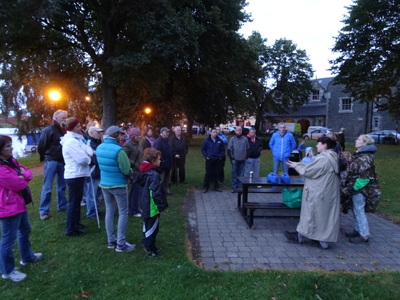
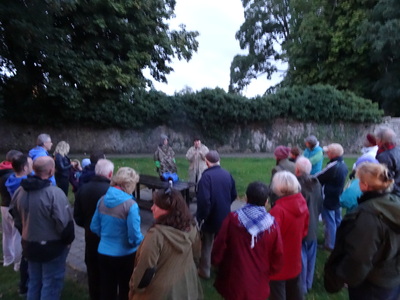
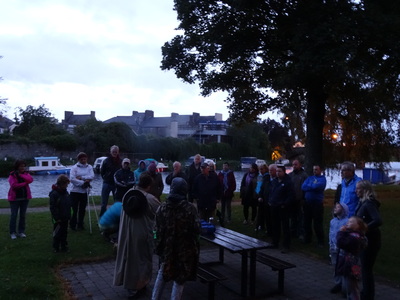
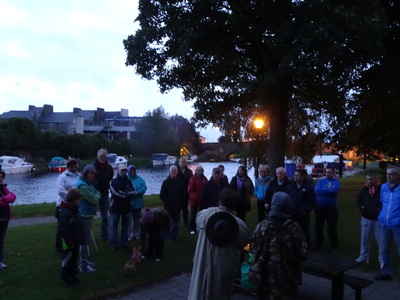
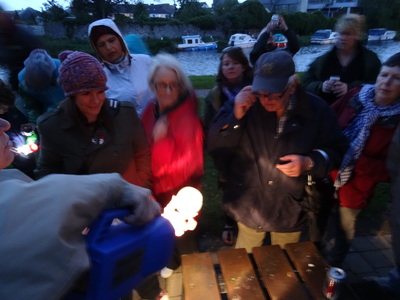
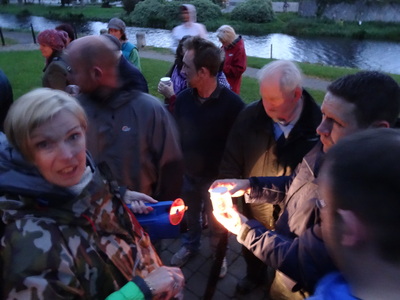
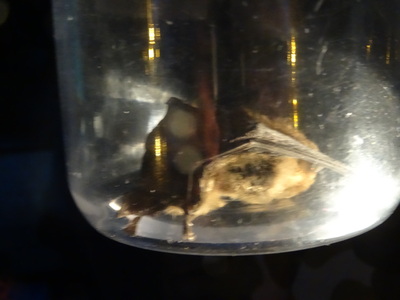
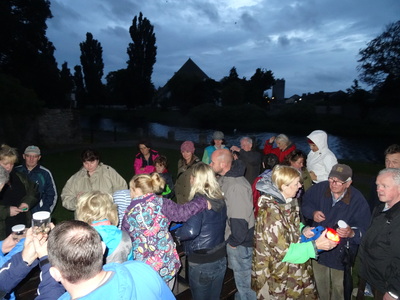
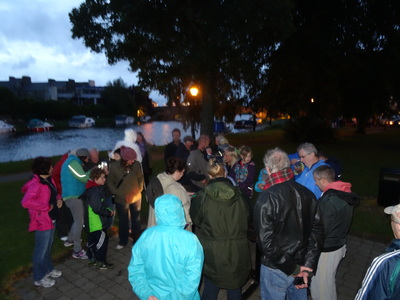
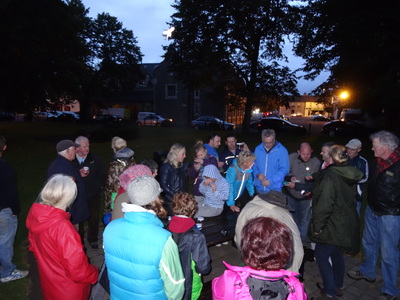
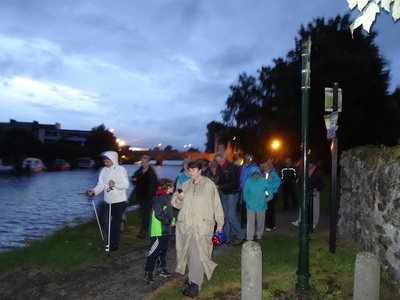
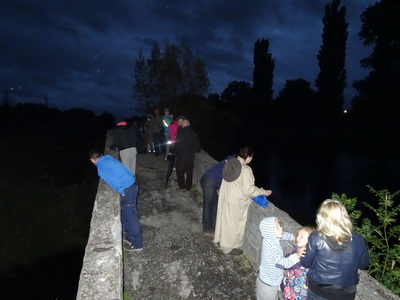
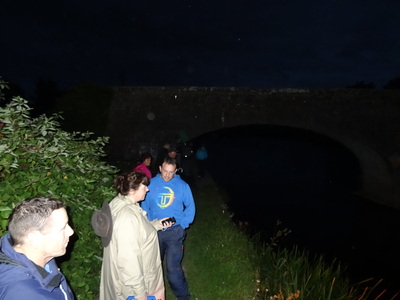
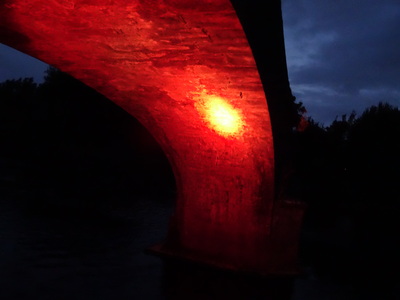
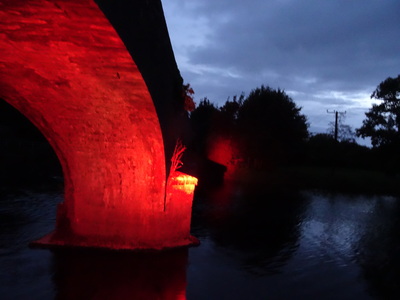
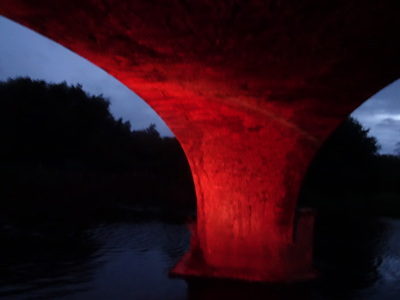
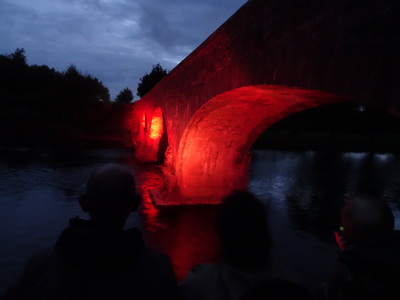
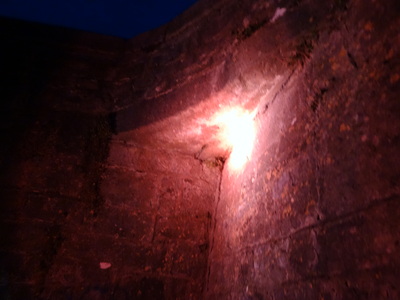
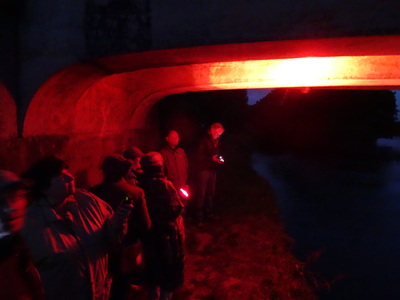
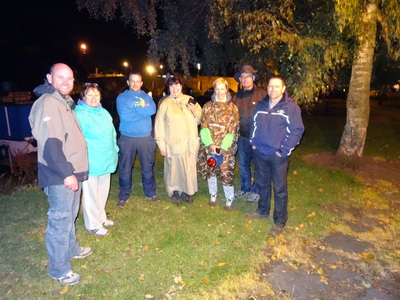
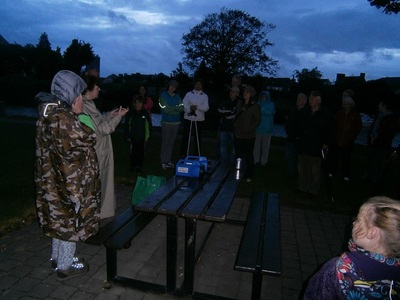
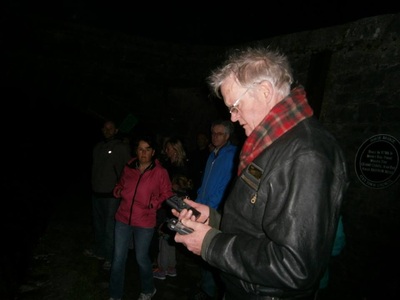
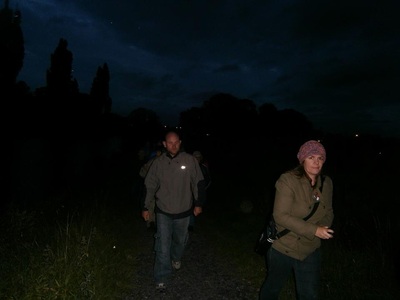
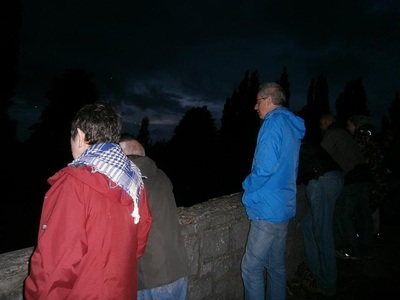
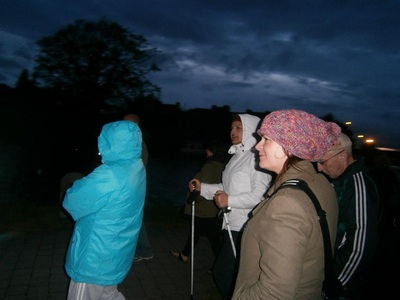
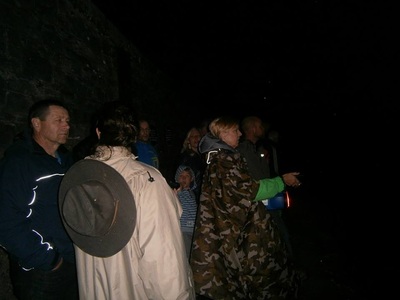
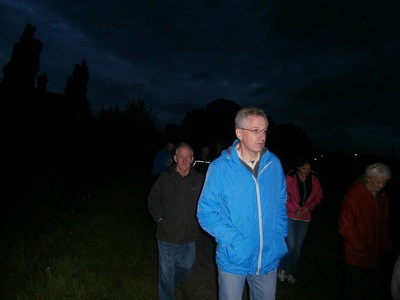
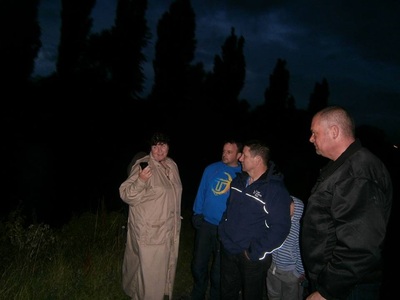
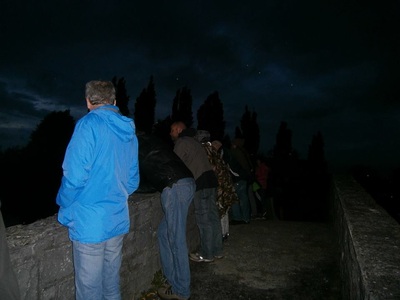
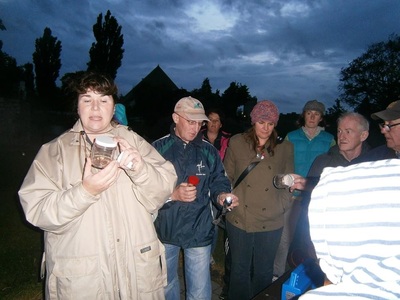
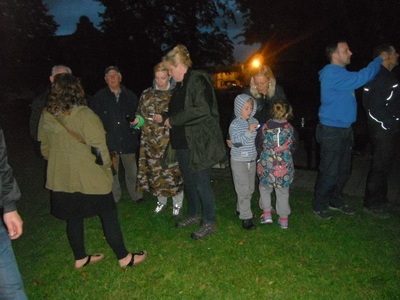
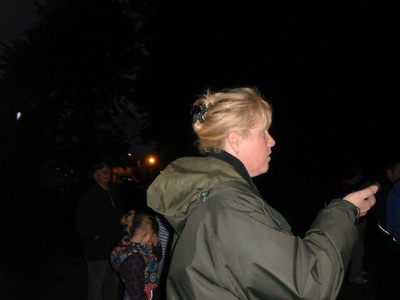
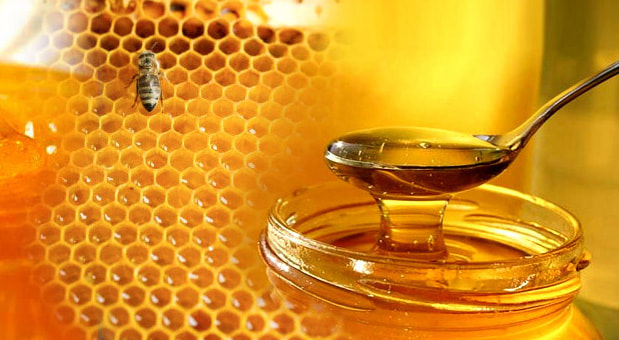
 RSS Feed
RSS Feed